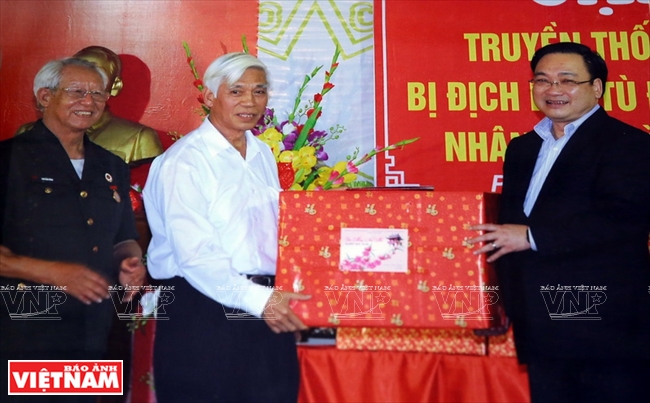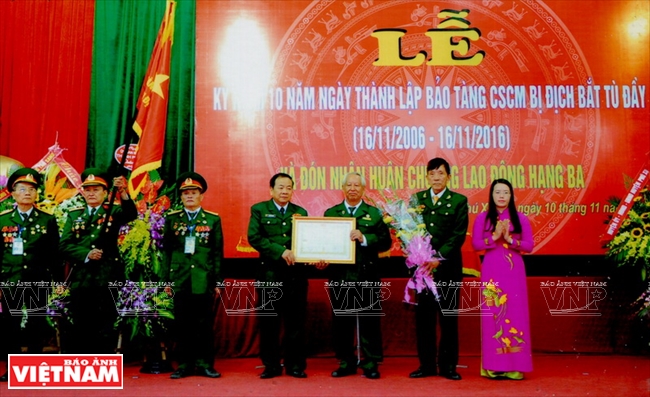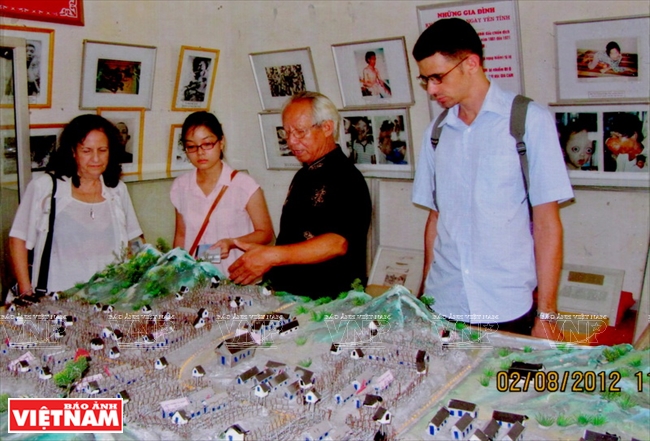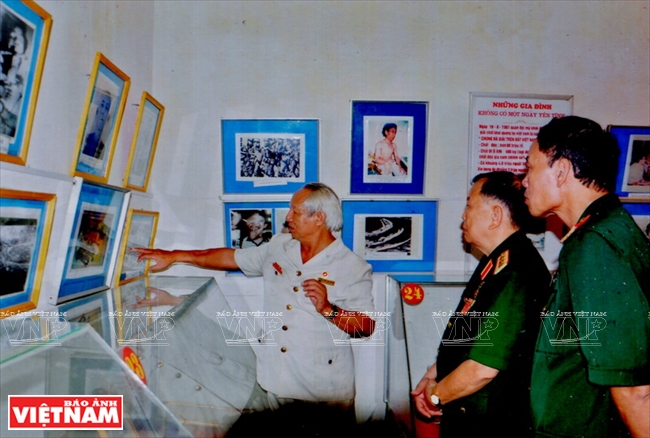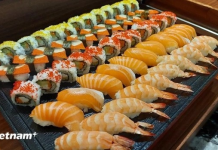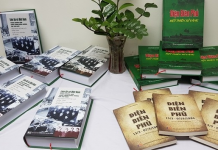Bang joined the liberation army in 1965. During a fierce battle he was severely wounded and captured. He was imprisoned in 1970 and released after three years thanks to the Paris Peace Accords. He returned home and found work in the transportation sector.
The idea of establishing the museum first came to Bang in 1985 when he was the head of a team in charge of repairing Gie bridge in Ha Tay. Bang and his workers discovered a huge bomb dropped by American aircraft in the destructive war against the north. After the bomb was defused, he displayed it under the foot of the bridge, which immediately attracted much public attention.
|
Lam Van Bang was one of 70 people who were praised at the 70th anniversary of Ho Chi Minh’s call for patriotic emulation in June 2018. |
Bang then started thinking of opening a place to store war memorabilia, especially those relating to captured and imprisoned soldiers.
“When I was imprisoned in Bien Hoa, I received thoughtful care from the other inmates even though they would be ruthlessly beaten for doing so. Many of them died before the country was reunified so I just want to do something in memory of my comrades,” Bang said.
|
–The Prisoners of War Museum in Nam Quat village, Nam Trieu commune, Phu Xuyen district, Hanoi, was awarded the third-class Labor Order. –Lam Van Bang was one of 70 people who were praised at the 70th anniversary of Ho Chi Minh’s call for patriotic emulation in June 2018. Bang traveled to prisons of the former regimes nationwide to collect objects despite his poor health as an old war invalid and limited finances. |
Bang started collecting his colleagues’ souvenirs and displayed them at the museum which was first a 12m2 room at his home.
Upon retirement, he spent most of the time travelling across the country to his colleagues’ houses to collect items for the museum.
Bang’s museum, which is now built on a 1,600 ha area donated by the Lam family, has more than 5,000 items which are displayed in ten themed sections, including a temple dedicated to Uncle Ho and martyrs dying at Phu Quoc prison.
The museum has a special team of 15 guides who are all war veterans and truly “living exhibits” to show the severity of the war.
The museum has received thousands of visitors since it opened, including veterans, teachers, students and young people. Most of them are deeply moved upon learning the stories behind the items on display.
|
The room which stores objects and photos about the war against the US. |
Walking around the museum, we stopped at a national flag with the size of a cigarette pack. Bang recalled that he had to travel to Khanh Hoa, a central province, four times to get the flag. He told us that the flag was used for a new member of the Party to take an oath when he was enlisted to the Party in prison.
The last person who was assigned to keep the flag was Bang’s companion in arms, Nguyen Van Du. Du kept the rolled flag in a small plastic bag. Every time he was searched by the warden, Du tied the bag with a thread and swallowed it. The other end of the thread was hooked to his teeth and after the search, the bag was drawn out again. In this way, the national flag, which carried a story of tears, torture and awe-inspiring courage, was kept intact, and became a symbol of the revolutionary spirit in the prison.
Not taking his eyes off the flag, Bang said “I want the museum to become a place to restore a part of the nation’s history and educate younger generations about national pride that no books can replace.” Bang also hoped the next generation would continue the education./.

